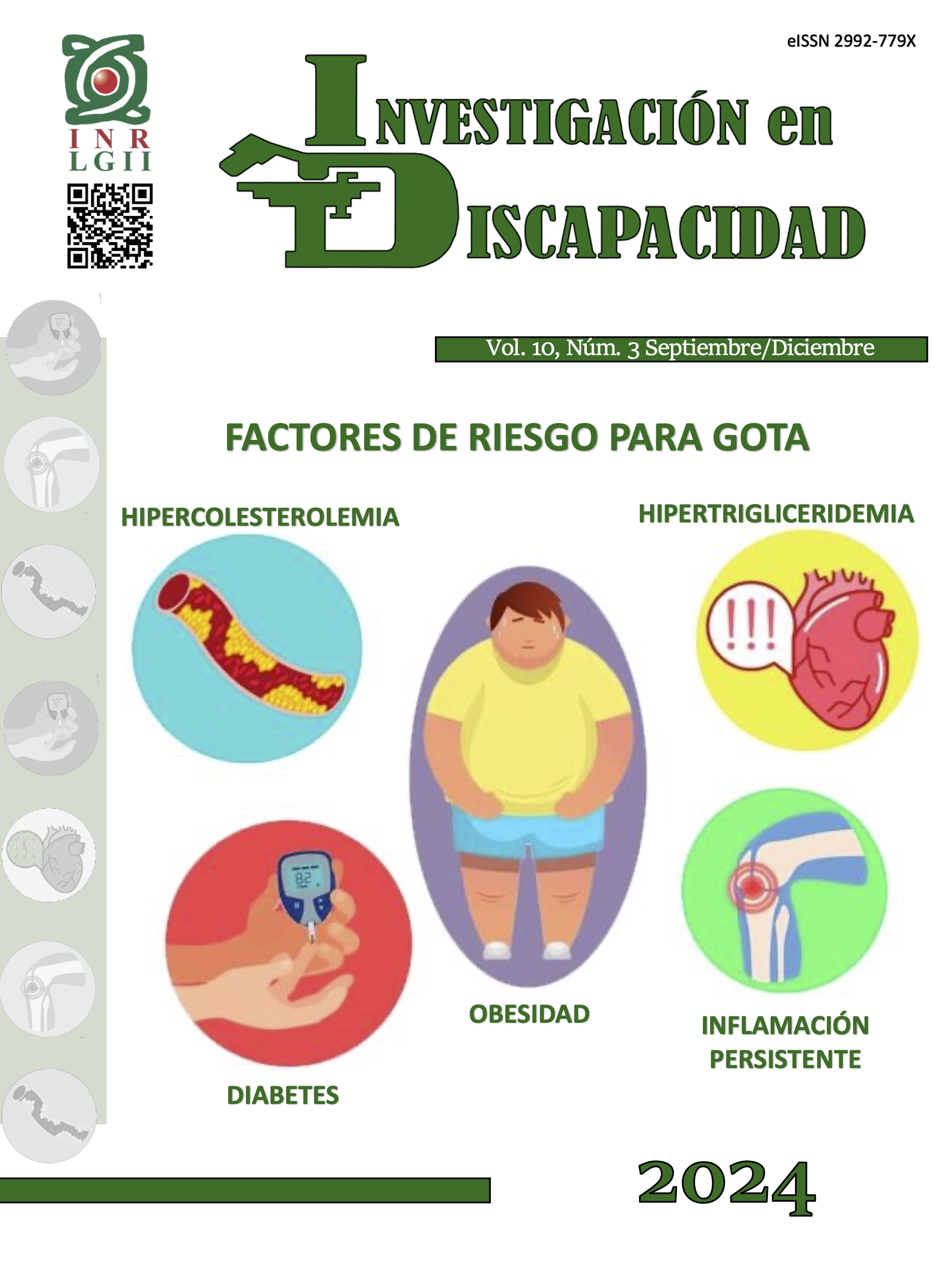Explorando algunas técnicas proteómicas: Western blot, dot blot y electroforesis bidimensional complementada con espectrometría de masas
DOI:
https://doi.org/10.35366/118258Palabras clave:
Proteína, Western blot, Dot blot, Electroforesis bidimensional, Inmunodetección, semicuantitativaResumen
El desarrollo de la proteómica en la biomedicina, es crucial, ya que las proteínas son clave en funciones celulares, convirtiéndolas en moléculas indispensables en la investigación para lograr entender su papel biológico. Para ello, es necesario considerar tanto sus propiedades bioquímicas, como electrofísicas, para lograr su separación y determinación. Para estudiar la expresión proteica se realizan técnicas como Western blot (WB), Dot blot (DB) y electroforesis bidimensional, que permiten identificar su expresión, su intensidad y modificaciones postraduccionales importantes durante la actividad biológica. El WB se basa en la separación de proteínas de acuerdo a su carga y peso molecular (PM), y posterior transferencia a una membrana sólida para que un anticuerpo específico reconozca a la proteína de interés. Para el DB, no se requiere de una separación electroforética, sino que se colocan las muestras directamente sobre una membrana para estimar semi-cuantitativamente la concentración de proteína. Finalmente, está la electroforesis bidimensional en gel de poliacrilamida (2D-PAGE), que es capaz de separar más de 1500 proteínas de una sola muestra de manera simultánea, además permite combinarla con diversos colorantes y otras técnicas. Es importante señalar que estos métodos, además requieren medios particulares para identificar las proteínas de interés, como un marcador de PM, tinciones o anticuerpos acoplados a enzimas o fluoróforos. La aplicación de las técnicas proteómicas va desde el área de investigación básica, hasta la clínica, con el fin de detectar nuevos biomarcadores de interés biomédico. El objetivo de esta revisión es brindar un panorama general del fundamento de estas técnicas.
##plugins.generic.pfl.publicationFactsTitle##
##plugins.generic.pfl.reviewerProfiles## N/D
##plugins.generic.pfl.authorStatements##
Indexado: {$indexList}
-
##plugins.generic.pfl.indexedList##
- ##plugins.generic.pfl.academicSociety##
- N/D
Citas
Towbin, H., Staehelin, T., & Gordon, J. (1979). Electrophoretic transfer of proteins from polyacrylamide gels to nitrocellulose sheets: procedure and some applications. Proceedings of the National Academy of Sciences of the United States of America, 76(9), 4350–4354. https://doi.org/10.1073/pnas.76.9.4350
Taylor, S. C., & Posch, A. (2014). The design of a quantitative western blot experiment. BioMed research international, 2014, 361590. https://doi.org/10.1155/2014/361590
Singh, K.K., Gupta, A., Bharti, C. et al. Emerging techniques of western blotting for purification and analysis of protein. Futur J Pharm Sci 7, 239 (2021). https://doi.org/10.1186/s43094-021-00386-1
Mishra M, Tiwari S, Gomes AV. Protein purification and analysis: next generation Western blotting techniques. Expert Rev Proteomics. 2017 Nov;14(11):1037-1053. doi: 10.1080/14789450.2017.1388167.
Glatter T, Ahrné E, Schmidt A. Comparison of Different Sample Preparation Protocols Reveals Lysis Buffer-Specific Extraction Biases in Gram-Negative Bacteria and Human Cells. J Proteome Res. 2015 Nov 6;14(11):4472-85. doi: 10.1021/acs.jproteome.5b00654.
Kurien, B. T. (2021). Western Blotting for the Non-Expert. Techniques in Life Science and Biomedicine for the Non-Expert. doi:10.1007/978-3-030-70684-5
Martínez-Flores K, Salazar-Anzures ÁT, Fernández-Torres J, et al. Western blot: a tool in the biomedical field. Investigación en Discapacidad. 2017;6(3):128-137.
Kielkopf CL, Bauer W, Urbatsch IL. Bradford Assay for Determining Protein Concentration. Cold Spring Harb Protoc. 2020 Apr 1;2020(4):102269. doi: 10.1101/pdb.prot102269. PMID: 32238597.
García-Solaesa V, Abad SC. SDS-Polyacrylamide Electrophoresis and Western Blotting Applied to the Study of Asthma. Methods Mol Biol. 2016;1434:107-20. doi: 10.1007/978-1-4939-3652-6_8.
Laemmli UK (1970) Cleavage of structural proteins during the assembly of the head of bacteriophageT4. Nature 227:680–685.
Bass JJ, Wilkinson DJ, Rankin D, Phillips BE, Szewczyk NJ, Smith K, Atherton PJ. An overview of technical considerations for Western blotting applications to physiological research. Scand J Med Sci Sports. 2017 Jan;27(1):4-25. doi: 10.1111/sms.12702. Epub 2016 Jun 5. PMID: 27263489; PMCID: PMC5138151.
Gibbons J. Western blot: protein transfer overview. N Am J Med Sci. 2014 Mar;6(3):158-9. doi: 10.4103/1947-2714.128481. PMID: 24741557; PMCID: PMC3978941.
García TJJ & Ortega R. Inmunotransferencia de geles de proteínas de poliacrilamida tipo Western blot. Mens. Bioquim. 46 (2022): 103-116
Xiang, Y., Zheng, Y., Liu, S. et al. Comparison of the sensitivity of Western blotting between PVDF and NC membranes. Sci Rep 11, 12022 (2021). https://doi.org/10.1038/s41598-021-91521-8
Kurien BT, Scofield RH. Western blotting: an introduction. Methods Mol Biol. 2015;1312:17-30. doi: 10.1007/978-1-4939-2694-7_5. PMID: 26043986; PMCID: PMC7304528.
Goldman A, Harper S, Speicher DW. Detection of Proteins on Blot Membranes. Curr Protoc Protein Sci. 2016 Nov 1;86:10.8.1-10.8.11. doi: 10.1002/cpps.15. PMID: 27801518; PMCID: PMC5646381.
Alegria-Schaffer A, Lodge A, Vattem K. Performing and optimizing Western blots with an emphasis on chemiluminescent detection. Methods Enzymol. 2009;463:573-99. doi: 10.1016/S0076-6879(09)63033-0. PMID: 19892193.
Hawkes R, Niday E, Gordon J. A dot-immunobinding assay for monoclonal and other antibodies. Anal Biochem. 1982 Jan 1;119(1):142-7. doi: 10.1016/0003-2697(82)90677-7. PMID: 7072935.
Guillemin N, Meunier B, Jurie C, Cassar-Malek I, Hocquette JF, Leveziel H, Picard B. Validation of a Dot-Blot quantitative technique for large scale analysis of beef tenderness biomarkers. J Physiol Pharmacol. 2009 Oct;60 Suppl 3:91-7. PMID: 19996488.
Uritani M., Hamada A. A simple and inexpensive dot-blotter for immunoblotting. Biochemical Education. 1999, 27 (3), pp. 169-170.
Helbing, D. L., Böhm, L., Oraha, N., Stabenow, L. K., & Cui, Y. (2022). A Ponceau S Staining-Based Dot Blot Assay for Rapid Protein Quantification of Biological Samples. Gels (Basel, Switzerland), 8(1), 43. https://doi.org/10.3390/gels8010043
Cabrera-Blanco O, Pisonero-Triana M, Rodríguez-Bejerano M, et al. Dot Blot para determinar la identidad antigénica en vacunas conjugadas contra Streptococcus pneumoniae serotipo 19F. VacciMonitor. 2017;26(1):1-7.
San Miguel-Hernández, Á., Martín-Gil, F. J., & Armentia-Medina, A. (2009). Metodología y aplicaciones en proteómica clínica. Dial Traspl, 30(4), 139-143.
Rozanova, S., Barkovits, K., Nikolov, M., Schmidt, C., Urlaub, H., & Marcus, K. (2021). Quantitative Mass Spectrometry-Based Proteomics: An Overview. Methods in molecular biology (Clifton, N.J.), 2228, 85–116. https://doi.org/10.1007/978-1-0716-1024-4_8
Gorg, A. Two-dimensional electrophoresis. Nature 349, 545–546 (1991). https://doi.org/10.1038/349545a0.
O'Farrell P. H. (1975). High resolution two-dimensional electrophoresis of proteins. The Journal of biological chemistry, 250(10), 4007–4021.
Görg, A., Obermaier, C., Boguth, G., Harder, A., Scheibe, B., Wildgruber, R., & Weiss, W. (2000). The current state of two-dimensional electrophoresis with immobilized pH gradients. Electrophoresis, 21(6), 1037–1053. https://doi.org/10.1002/(SICI)15222683(20000401)21:6<1037::AIDELPS1037>3.0.CO;2-V
Wilkins, M. R., Pasquali, C., Appel, R. D., Ou, K., Golaz, O., Sanchez, J. C., Yan, J. X., Gooley, A. A., Hughes, G., Humphery-Smith, I., Williams, K. L., & Hochstrasser, D. F. (1996). From proteins to proteomes: large scale protein identification by two-dimensional electrophoresis and amino acid analysis. Bio/technology (Nature Publishing Company), 14(1), 61–65. https://doi.org/10.1038/nbt0196-61
Westermeier R and Naven T. Proteomics in Practice, A Laboratory Manual of Proteome Analysis. Weinheim. Wiley-VCH Verlag GmbH. 2002.
Westermeier R. Electrophoresis in Practice. Weinheim. Wiley-VCH Verlag GmbH. 2001.
Stasyk T., Hellman U., Souchelnytskyi S. (2001) Optimizing sample preparation for 2-D electrophoresis. Life Science News 9, 8–11
Mackintosh, J. A., Choi, H. Y., Bae, S. H., Veal, D. A., Bell, P. J., Ferrari, B. C., Van Dyk, D. D., Verrills, N. M., Paik, Y. K., & Karuso, P. (2003). A fluorescent natural product for ultra sensitive detection of proteins in one-dimensional and two-dimensional gel electrophoresis. Proteomics, 3(12), 2273–2288. https://doi.org/10.1002/pmic.200300578
Tonge, R., Shaw, J., Middleton, B., Rowlinson, R., Rayner, S., Young, J., Pognan, F., Hawkins, E., Currie, I., & Davison, M. (2001). Validation and development of fluorescence two-dimensional differential gel electrophoresis proteomics technology. Proteomics, 1(3), 377–396. https://doi.org/10.1002/1615-9861(200103)1:3<377::AID-PROT377>3.0.CO;2-6
Yan, J. X., Harry, R. A., Spibey, C., & Dunn, M. J. (2000). Postelectrophoretic staining of proteins separated by two-dimensional gel electrophoresis using SYPRO dyes. Electrophoresis, 21(17), 3657–3665. https://doi.org/10.1002/1522-2683(200011)21:17<3657::AID-ELPS3657>3.0.CO;2-2
Aitken, Alastair. (2003). Proteins and Proteomics: A Laboratory Manual. R. J. SIMPSON. Genetics Research . 81. 243-244. 10.1017/S0016672303216323.
Birhanu A. G. (2023). Mass spectrometry-based proteomics as an emerging tool in clinical laboratories. Clinical proteomics, 20(1), 32. https://doi.org/10.1186/s12014-023-09424-x
Descargas
Publicado
Cómo citar
Número
Sección
Licencia
Derechos de autor 2024 Instituto Nacional de Rehabilitación Luis Guillermo Ibarra Ibarra

Esta obra está bajo una licencia internacional Creative Commons Atribución 4.0.
© Instituto Nacional de Rehabilitación Luis Guillermo Ibarra Ibarra under a Creative Commons Attribution 4.0 International (CC BY 4.0) license which allows to reproduce and modify the content if appropiate recognition to the original source is given.




